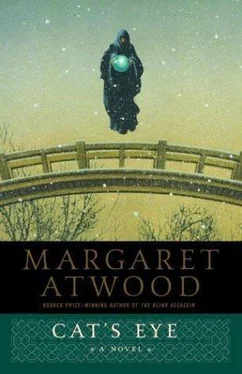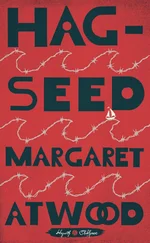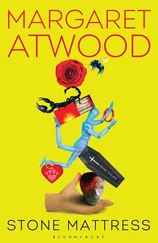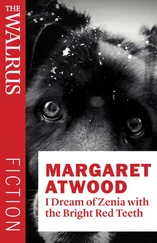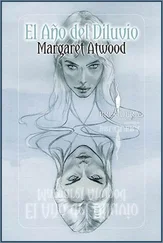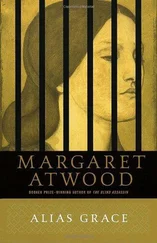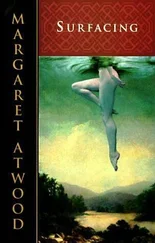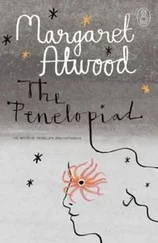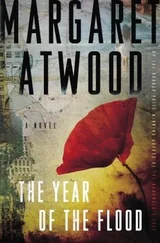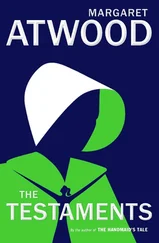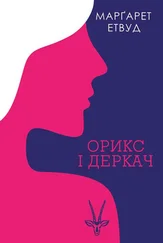Margaret Atwood - Cat's eye
Здесь есть возможность читать онлайн «Margaret Atwood - Cat's eye» весь текст электронной книги совершенно бесплатно (целиком полную версию без сокращений). В некоторых случаях можно слушать аудио, скачать через торрент в формате fb2 и присутствует краткое содержание. Жанр: Старинная литература, на английском языке. Описание произведения, (предисловие) а так же отзывы посетителей доступны на портале библиотеки ЛибКат.
- Название:Cat's eye
- Автор:
- Жанр:
- Год:неизвестен
- ISBN:нет данных
- Рейтинг книги:5 / 5. Голосов: 1
-
Избранное:Добавить в избранное
- Отзывы:
-
Ваша оценка:
- 100
- 1
- 2
- 3
- 4
- 5
Cat's eye: краткое содержание, описание и аннотация
Предлагаем к чтению аннотацию, описание, краткое содержание или предисловие (зависит от того, что написал сам автор книги «Cat's eye»). Если вы не нашли необходимую информацию о книге — напишите в комментариях, мы постараемся отыскать её.
Cat's eye — читать онлайн бесплатно полную книгу (весь текст) целиком
Ниже представлен текст книги, разбитый по страницам. Система сохранения места последней прочитанной страницы, позволяет с удобством читать онлайн бесплатно книгу «Cat's eye», без необходимости каждый раз заново искать на чём Вы остановились. Поставьте закладку, и сможете в любой момент перейти на страницу, на которой закончили чтение.
Интервал:
Закладка:
Mr. Hrbik stared up at me with his shining purple eyes. “Why do you want to take this class?” he said.
“It’s the only one I can get into,” I said. Then I realized how bad that sounded. “It’s my only hope. I don’t know anyone else who can teach me.”
“Why do you want to learn?”
“I don’t know,” I said.
Mr. Hrbik picked up his pencil and stuck the end of it into the side of his mouth, like a cigarette. Then he took it out again. He twirled his fingers in his hair. “You are a complete amateur,” he said. “But sometimes this is better. We can begin from nothing.” He smiled at me, the first time. He had uneven teeth. “We will see what we can make of you,” he said.
Mr. Hrbik paces the room. He despairs of us, all of us, including the model, whose surreptitious gum chewing maddens him. “Keep still,” he says to her, tugging at his hair. “Enough gum.” The model shoots him a malevolent look and clenches her jaw. He takes her arms and her sulky-faced head and rearranges them, as if she is a mannequin. “We will try again.”
He strides up and down among us, looking over our shoulders and grunting to himself, as the room fills with the sandy rasping noise of charcoal on paper. “No, no,” he says to a young man. “This is a body. ”
He pronounces it “bowdy.” “This is not an automobile. You must think of the fingers, touching this flesh, or the running of the hand over. This must be tactile.” I try to think the way he wants me to, but recoil. I have no wish to run my fingers over this woman’s goose-pimply flesh.
To one of the older women he says, “We do not want pretty. The bowdy is not pretty like a flower. Draw what is there.” He stops behind me, and I cringe, waiting. “We are not making a medical textbook,” he says to me. “What you have made is a corpse, not a woman.” He pronounces it “voman.”
I look at what I have drawn, and he is right. I am careful and accurate, but I have drawn a person-shaped bottle, inert and without life. Courage, which has brought me here, flows out of me. I have no talent.
But at the end of the class, when the model has risen stiffly to her feet and has clutched her sheet around her and padded off to dress, when I am putting away my charcoal, Mr. Hrbik comes to stand beside me. I rip out the drawings I have made, intending to crumple them up, but he puts his hand quickly on mine.
“Save these,” he says.
“Why?” I say. “They’re no good.”
“You will look at them later,” he says, “and you will see how far you have come. You can draw objects very well. But as yet you cannot draw life. God first made the bowdy out of dirt, and after he breathed in the soul. Both are necessary. Dirt and soul.” He gives me a brief smile, squeezes my upper arm. “There must be passion.”
I look at him uncertainly. What he says is a trespass: people don’t talk about bodies unless they’re discussing illnesses, or about souls except in church, or about passion unless they mean sex. But Mr. Hrbik is a stranger, and can’t be expected to know this.
“You are an unfinished voman,” he adds in a lower voice, “but here you will be finished.” He doesn’t know that finished means over and done with. He intends to be encouraging.
Chapter 49
I sit in the darkened auditorium, downstairs at the Royal Ontario Museum, leaning back in the hard seat covered with scratchy plush and breathing in the smell of dust and airlessness and stale upholstery and the sweetish face powder of the other students. I feel my eyes getting rounder and rounder, the pupils enlarging like an owl’s: for an hour I’ve been looking at slides, yellowy, sometimes unfocused slides of white marble women with flat-topped heads. These heads are holding up stone entablatures, which look very heavy; no wonder the tops of their heads are flat. These marble women are called caryatids, which originally referred to the priestesses of Artemis at Caryae. But they are no longer priestesses; they are now ornamental devices doubling as supporting columns.
There are many slides of columns as well, various kinds of columns from various periods: Doric, Ionic, Corinthian. Doric columns are the strongest and simplest, Corinthian ones are the lightest and most ornate, adorned with rows of acanthus leaves giving rise to graceful volutes and helices. A long pointer, emerging from the area of no light beside the screen, rests on the volutes and helices, indicating which is which. I will need these words later, when I have to regurgitate them for exams, so I attempt to write them in my notebook, bending my head down close to the paper in order to see. I spend a lot of time now writing obscure words in the dark.
I expect things to be better next month, when we’ll get away from the Greeks and Romans and into Mediaeval and Renaissance. Classical has come to mean, for me, bleachedout and broken. Most of the Greek and Roman things have body parts missing, and the general armlessness, leglessness, and noselessness is getting to me, not to mention the snapped-off penises. Also the grayness and whiteness, although I have learned to my surprise that all these marble statues used to be painted, in bright colors, with yellow hair and blue eyes and flesh tones, and sometimes dressed up in real clothing, like dolls. This class is a survey course. It’s supposed to orient us in time, in preparation for later, more specialized courses. It’s part of Art and Archaeology at the University of Toronto, which is the only sanctioned pathway that leads anywhere close to art. Also the only thing I can afford: I have won a scholarship to university, which was no more than expected. “You should use the brains God gave you,” my father is in the habit of saying, though we both know he thinks this gift was really bestowed by him. If I left university, threw over my scholarship, he would not see his way clear to putting up the cash for anything else.
When I first told my parents I was not going into Biology after all but was going to be an artist, they reacted with alarm. My mother said that was fine if it was what I really wanted to do, but they were worried about how I would make a living. Art was not something that could be depended on, though all right for a hobby, like shellwork or wood carving. But Art and Archaeology was reassuring to them: I could veer off in the archaeology direction and take to digging things up, which was more serious. At the very least I will come out of it with a degree, and with a degree you can always teach. I have private reservations about this: I think of Miss Creighton, the Art Appreciation teacher at Burnham High, pudgy and beleaguered, who got routinely locked into the supply closet where the paper and paints were kept by some of the greasier and more leathery boys.
One of my mother’s friends tells her that art is something you can always do at home, in your spare time. The other students in Art and Archaeology are all girls but one, just as the professors are all men but one. The student who is not a girl and the professor who is not a man are considered strange; the first has an unfortunate skin condition, the second a nervous stammer. None of the girl students wants to be an artist; instead they want to be teachers of art in high schools, or, in one case, a curator in a gallery. Or else they are vague about their wants, which means they intend to get married before any of these other things becomes necessary.
What they wear is cashmere twin sets, camel’s-hair coats, good tweed skirts, pearl button earrings. They wear tidy medium-heel pumps and tailored blouses, or jumpers, or little weskits with matching skirts and buttons. I wear these things too, I try to blend in. Between classes I drink cups of coffee with them and eat doughnuts, sitting in various common rooms and butteries and coffee shops. They discuss clothes, or talk about the boys they are going out with, licking the doughnut sugar off their fingers. Two of them are already pinned. Their eyes during these conversations look dewy, blurred, pulpy, easily hurt, like the eyes of blind baby kittens; but also sly and speculative, and filled with greed and deceit. I feel ill at ease with them, as if I am here under false pretences. Mr. Hrbik and the tactility of the body do not fit into Art and Archaeology; my botched attempts at drawing naked women would be seen as a waste of time. Art has been accomplished, elsewhere. All that remains to be done with it is the memory work. The entire Life Drawing class would be viewed as pretentious, and also ludicrous. But it is my lifeline, my real life. Increasingly I begin to eliminate whatever does not fit in with it, paring myself down. To the first class I made the mistake of wearing a plaid jumper and a white blouse with a Peter Pan collar, but I learn quickly. I switch to what the boys wear, and the other girl: black turtlenecks and jeans. This clothing is not a disguise, like other clothing, but an allegiance, and in time I work up the courage to wear these things even in the daytime, to Art and Archaeology; all except the jeans, which nobody wears. Instead I wear black skirts. I grow out my high school bangs and pin my hair back off my face, hoping to look austere. The girls at university, in their cashmere and pearls, make jokes about arty beatniks and talk to me less.
Читать дальшеИнтервал:
Закладка:
Похожие книги на «Cat's eye»
Представляем Вашему вниманию похожие книги на «Cat's eye» списком для выбора. Мы отобрали схожую по названию и смыслу литературу в надежде предоставить читателям больше вариантов отыскать новые, интересные, ещё непрочитанные произведения.
Обсуждение, отзывы о книге «Cat's eye» и просто собственные мнения читателей. Оставьте ваши комментарии, напишите, что Вы думаете о произведении, его смысле или главных героях. Укажите что конкретно понравилось, а что нет, и почему Вы так считаете.
